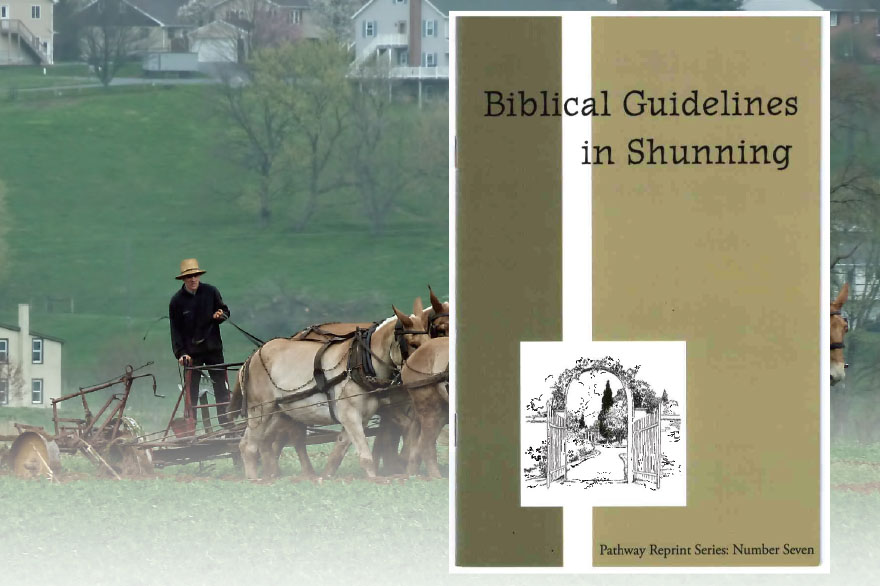The Old Order Amish are known for practicing shunning. Hollywood has at times grasped ahold of this practice for the way in which it can be exaggerated and used for dramatic situations. But, how do the actual Amish people carry out “the ban?” Well, it turns out that shunning has been an issue among the Amish essentially from the beginning. There has never been a truly uniform approach to the subject of excommunication. An inexpensive booklet, widely available at Amish bookstores which is meant to ground the community in generally accepted Biblical guidelines for shunning, offers a great view into this element of Amish church doctrine.
The booklet starts out as if one is reading of a current struggle between an Amish young man and his older, more established bishop. Only after turning a few pages is the reader informed that the booklet has been detailing the original shunning “showdown” from 1693 to 1700 – and that the protagonist Jacob is none other than Jacob Ammann himself. Ammann is the “founder” of the Amish, or at least the namesake of the group.
To summarize things greatly, Jacob Ammann believed in a more literal definition of shunning, to include both social (including within the realm of business dealings) and spiritual distance, whereas his main adversary, Hans (John) Reist believed in shunning being associated only with taking communion (spiritual food only, as opposed to everyday meals.) As the booklet points out, neither side was necessarily totally “right” with how they dealt with each other.
Today’s Amish are not instructed to revere their founder Jacob as a saintly figure. Instead, as the booklet puts it, Ammann was “very, very human.” His reputation was that of being “overbearing and headstrong.” So, it was with a great deal of rash action and forceful confrontation that “the Amish division” took place. Those who agreed with Ammann and his stricter interpretation of shunning went one way, the less-strict went the other.
Shunning today, among the Old Order Amish, is nonetheless based on Ammann’s writings. What is the point? The break in relationship with the erring person is meant to do three things:
- Keep their actions from infiltrating the rest of the church. One bad apple can spoil the bunch if not removed.
- Bring the erring person to a point of repentance. The hard-love approach is meant to show the person what they have given up in their pursuit of unrighteous things.
- Restoration. This is probably the most surprising to most visitors to Amish Country. While a person who is “under the ban” (being shunned) is often forever removed from the Amish church membership, shunning at its core has a hopeful view of restoration. Meaning that the erring person would return to the fold, having made a public confession in front of the church, beseeched forgiveness, and been granted the same. Restoration is not often achieved, but it remains the goal.

